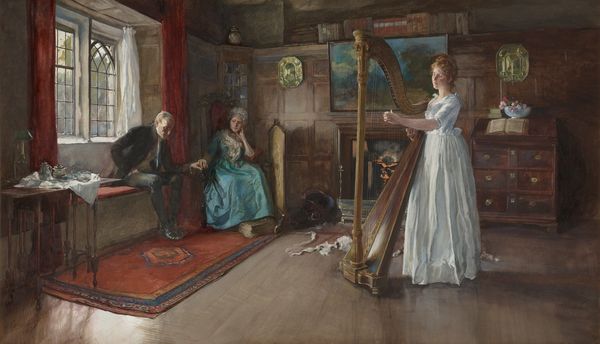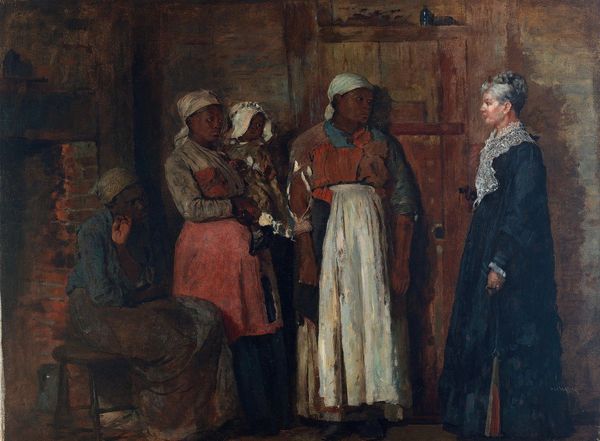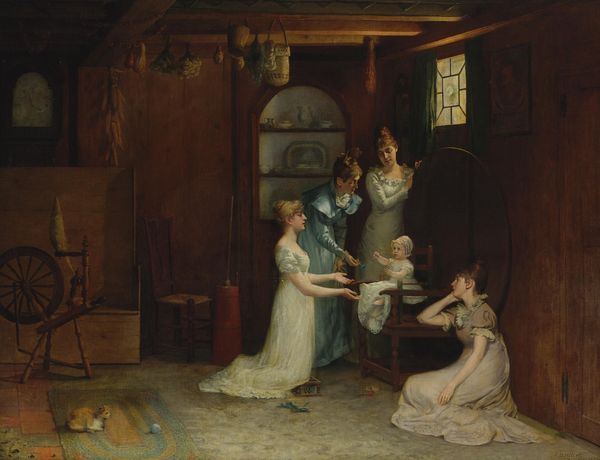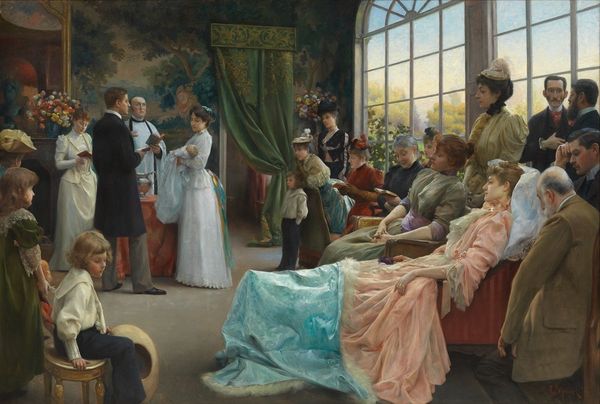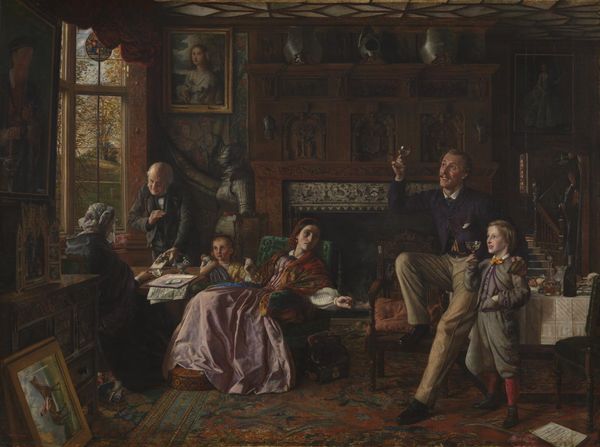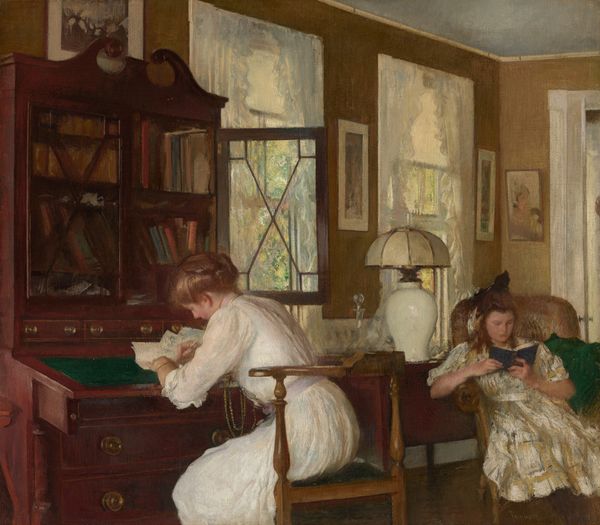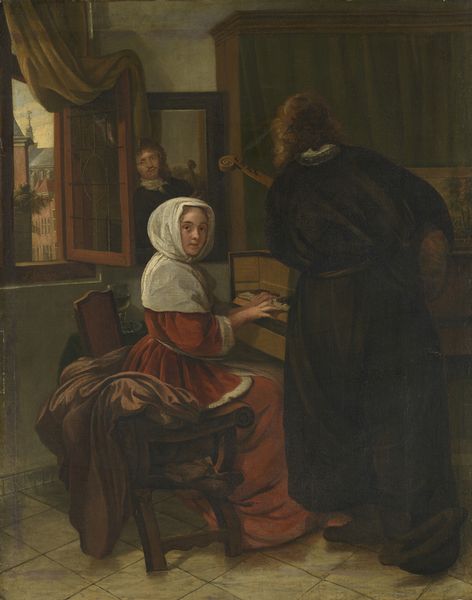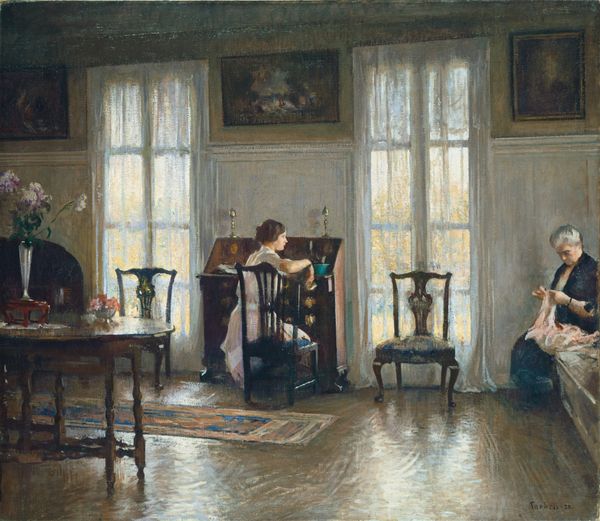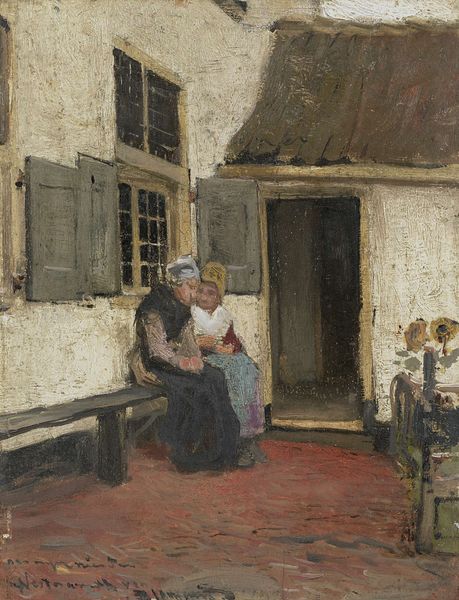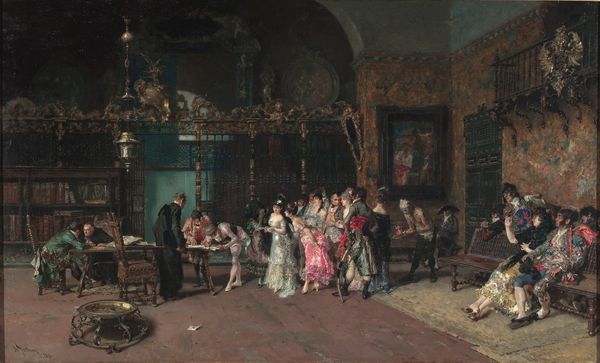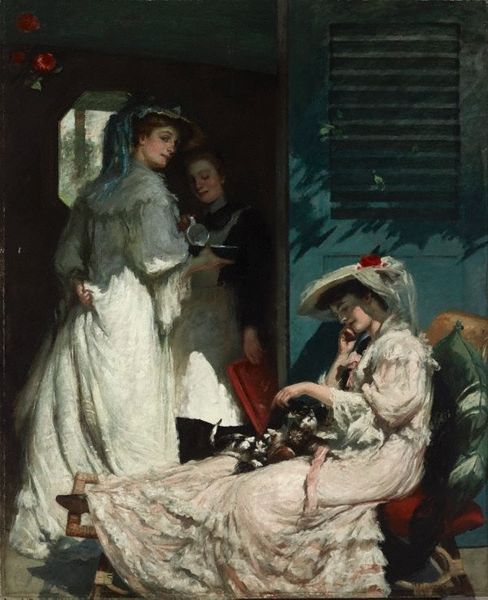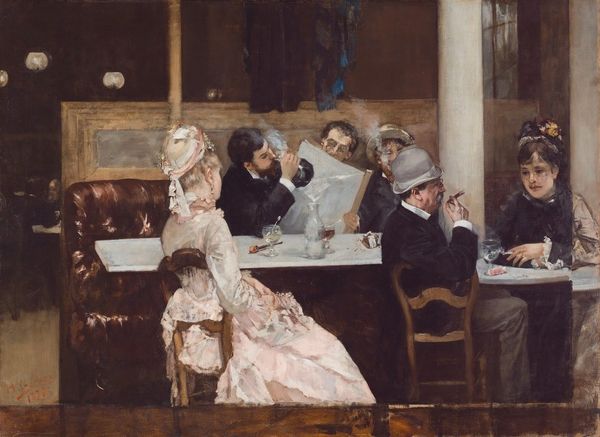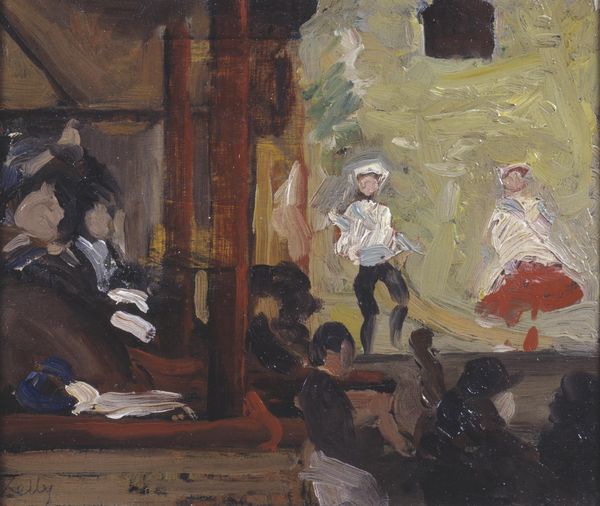
Copyright: Public Domain: Artvee
Curator: Welcome. We’re now looking at Edmund Blair Leighton’s "Devotion," an oil painting created in 1895. It depicts several figures inside what appears to be a church or chapel. Editor: Oh, my goodness, it’s like stepping back into a Jane Austen novel. So quaint and proper! There's such a gentle hush about it, wouldn't you agree? Almost as if the artist captured a silent moment of reflection during the service. Curator: Indeed. Leighton was associated with the Pre-Raphaelites and Academic art, and this work very much exemplifies that style, with its focus on historical genre scenes. You see the detail in the costumes, the architecture... the way the light filters in? This was all about creating a believable past. Editor: Believable, yes, but also idealized, no? It’s all so terribly pretty. The woman in the foreground with the large hat feels so central - almost as if devotion isn't just a religious act here, but perhaps a...performance? A socially acceptable form of quiet self-expression? Curator: That’s a fascinating interpretation. One could argue that Leighton, working in the late 19th century, was both celebrating and subtly critiquing Victorian values of piety and social decorum. He's part of this surge of paintings presenting idyllic visions of the medieval and renaissance past, with their own conservative message in terms of contemporary models of society. Editor: See, that's why I love paintings! So much going on beneath the surface. What strikes me, too, is how everyone is holding a book but we can’t tell if they are actually engaging or are just going through the motions. It's beautifully rendered ambiguity, this quiet, observational scene... Makes me wonder if they're singing joyfully, or quietly plotting a revolution! Curator: Well, whatever their inner thoughts, Leighton provides us with a glimpse into a carefully constructed vision of late Victorian England, where even acts of faith are carefully framed by social expectation. The rise of public art exhibitions meant Leighton was catering to the tastes of an ever expanding middle class audience, hungry for images they could easily relate to, but which also idealized history. Editor: So well put! A reminder that art never exists in a vacuum, does it? Anyway, a quiet moment beautifully rendered - time to move onto something a bit louder now I think...
Comments
No comments
Be the first to comment and join the conversation on the ultimate creative platform.
